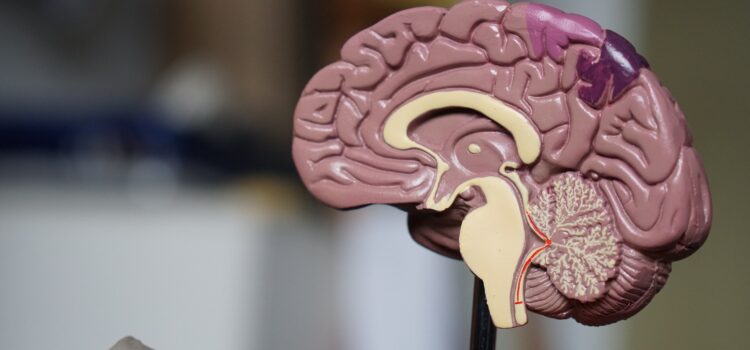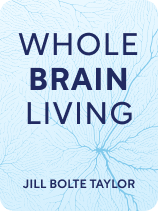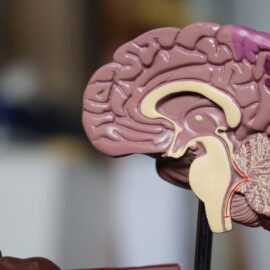

This article is an excerpt from the Shortform book guide to "Whole Brain Living" by Jill Bolte Taylor. Shortform has the world's best summaries and analyses of books you should be reading.
Like this article? Sign up for a free trial here.
What are the two essential types of brain tissue? What do the limbic system and cerebral cortex do?
According to Jill Bolte Taylor’s book Whole Brain Living, there are two types of tissue that make up the left and right hemispheres of the brain: limbic tissue and cortical tissue. Both of these tissues serve vital functions that the brain needs to work properly.
Keep reading to learn more about these types of brain tissue and why they’re so important.
The Limbic System and Cerebral Cortex
Taylor says that in addition to grasping the differences between our left and right hemispheres, it’s important to understand the two types of brain tissue that span both halves and divide each hemisphere into two distinct “characters.” The first type is limbic tissue, which processes emotions. Limbic tissue makes up the limbic system. This is the part of our brain that evolved earlier than the cerebral cortex, and its reactions to external stimuli are automatic and rapid. For example, when someone sneaks up on you, the limbic system might react by causing you to jump and squeal.
The second type of tissue, cortical tissue, is situated outside of the limbic system in the brain (like an outer layer of an onion), and cortical tissue is responsible for higher-level thinking. Taylor explains that cortical tissue makes up the cerebral cortex, which evolved more recently in humans. The cerebral cortex is at work when we’re thinking through a logic puzzle or weighing the pros and cons of a decision.
| Are the Cerebral Cortex and Limbic System Autonomous Modules? Taylor’s descriptions of the cerebral cortex and limbic system touch on a concept partially explored in the previous section—the idea that individual parts of the brain perform different functions. There’s still some disagreement about how accurate it is to say that the cerebral cortex and limbic system are distinct functional modules. Some researchers agree with Taylor’s overall modular view of the brain. The modular model of the limbic system specifically is supported by research showing that damage or abnormality in the limbic system (or sub-components of it) leads to specific disorders. This suggests that an individual brain component has a specific role that’s autonomous from other parts. For example, schizophrenia is associated with smaller limbic system components. Other research on mental disorders supports the idea that the cerebral cortex has modular functional structures as well. On the other hand, others take a more holistic view of the brain. For example, in Keep Sharp, Sanjay Gupta asserts that the human brain is highly dependent on connections between the various parts, and it’s the network of neurons across the brain that enables us to perform tasks. Research supporting this idea shows that functions such as working memory (associated with the cerebral cortex) require neural communication across multiple parts of the brain. Regardless of these alternative perspectives on the brain, understanding the cerebral cortex and limbic system as distinct parts is helpful for learning the differences among Taylor’s four characters and their distinct personalities. |
Because of the physical arrangement of these tissues (the limbic system is closer to the brain stem than the cerebral cortex) we experience emotional reactions first—before we have a chance to rationalize what’s going on. During this initial emotional reaction, the limbic system causes physiological changes such as releasing chemicals into the bloodstream or increasing our heart rate, and this physical experience of an emotion lasts for 90 seconds. Taylor says that after that, we can use our cerebral cortex to shift our thinking and override the initial reaction. Or, we can choose to re-trigger the same emotion and start the 90-second cycle over again. She refers to this phenomenon as the “90 second rule.”
(Shortform note: Some research suggests that the 90-second rule may not be accurate. For example, adrenaline—a hormone induced by an exciting or dangerous situation—can stay in the body’s system for up to an hour. Panic attacks (a period of intense anxiety accompanied by physical symptoms like rapid breathing) can last for 20 to 30 minutes. In addition, one study says that the duration of an emotion can range from a few seconds to several hours or longer. Nonetheless, Taylor’s 90 second rule is frequently cited as a helpful tool for self-improvement.)

———End of Preview———
Like what you just read? Read the rest of the world's best book summary and analysis of Jill Bolte Taylor's "Whole Brain Living" at Shortform.
Here's what you'll find in our full Whole Brain Living summary:
- How you can choose to access different parts of your brain
- The four areas of the brain that perceive and navigate the world differently
- How to achieve emotional well-being by getting to know our brains better






